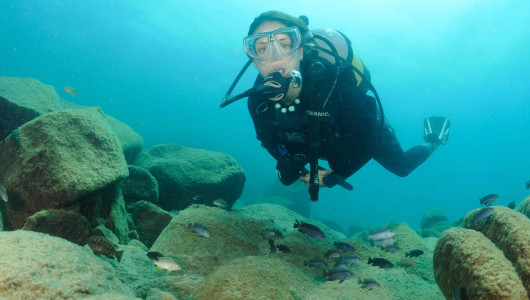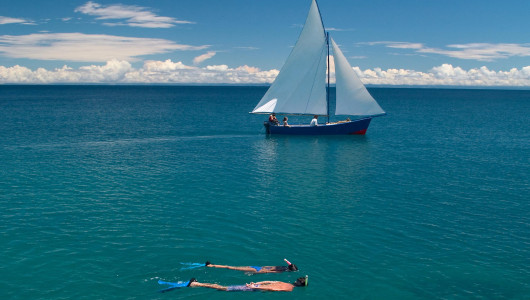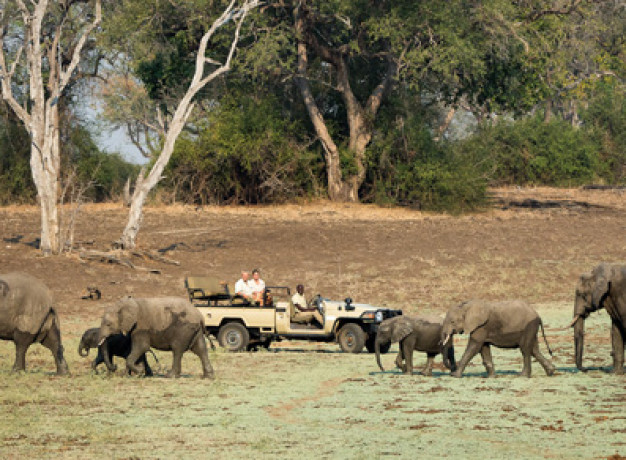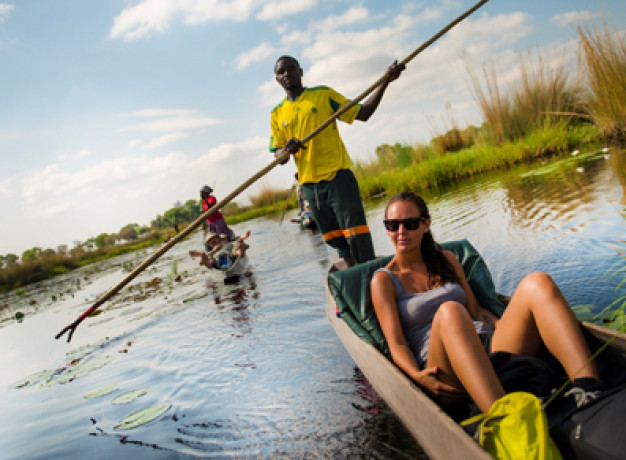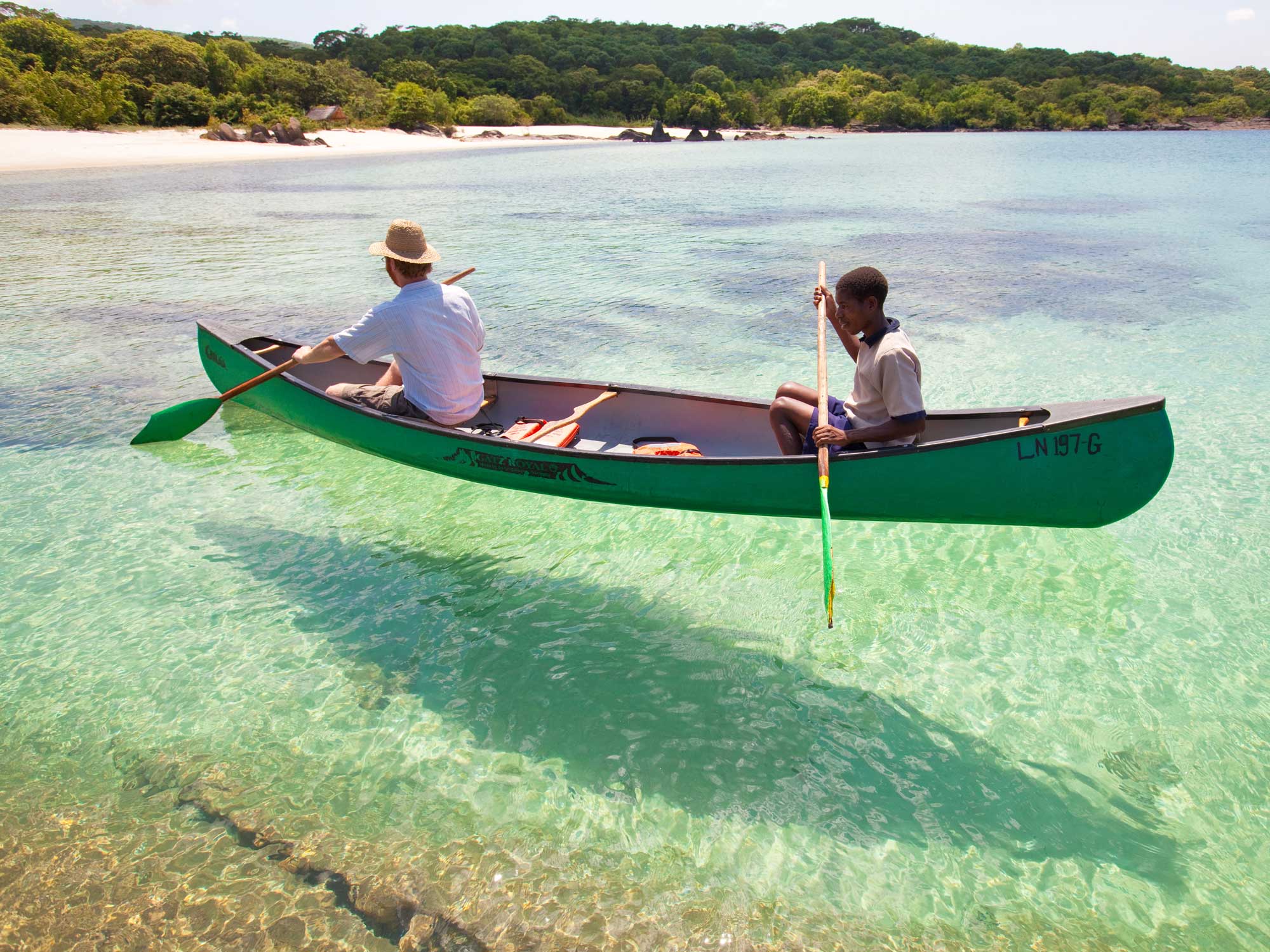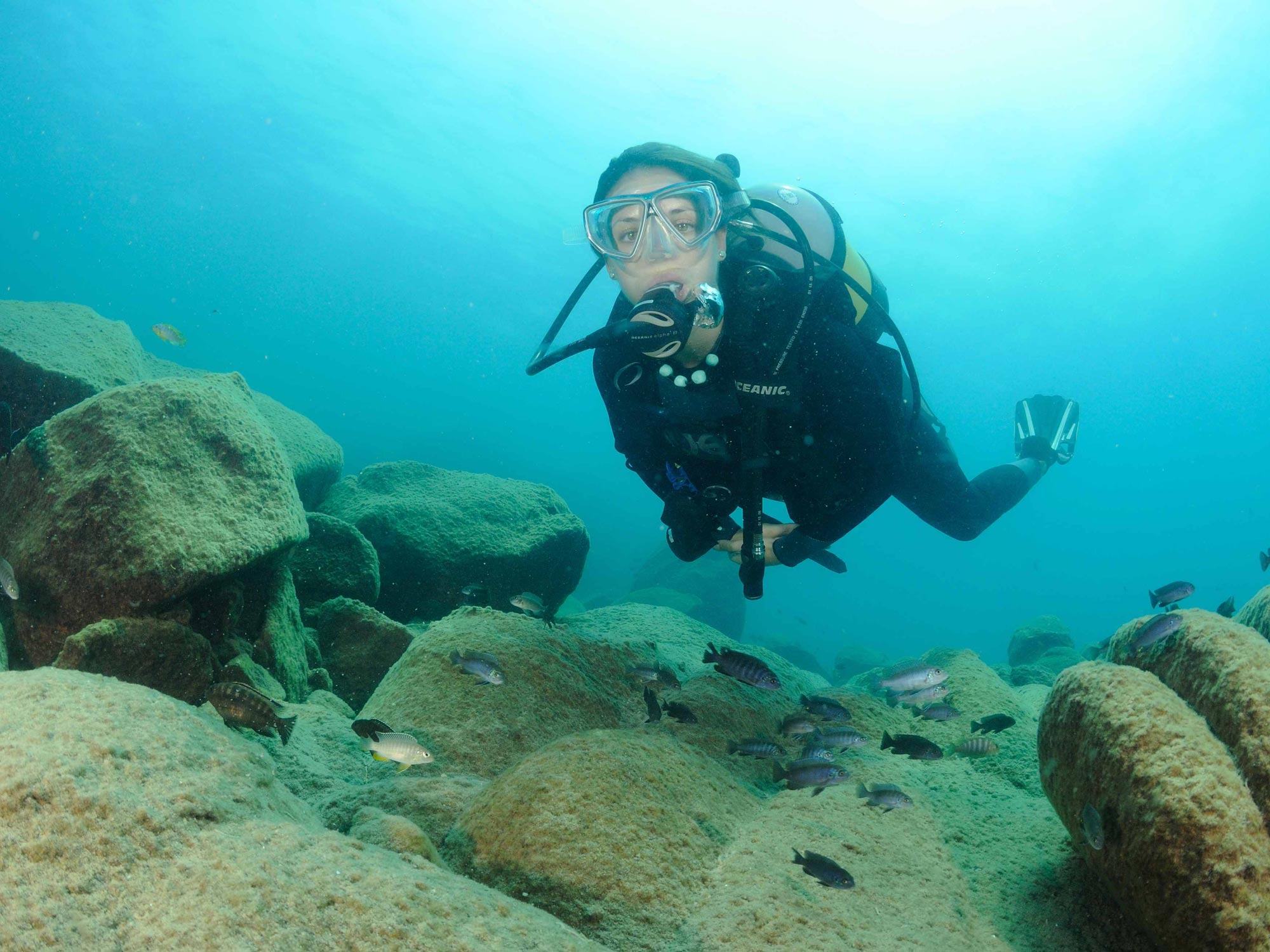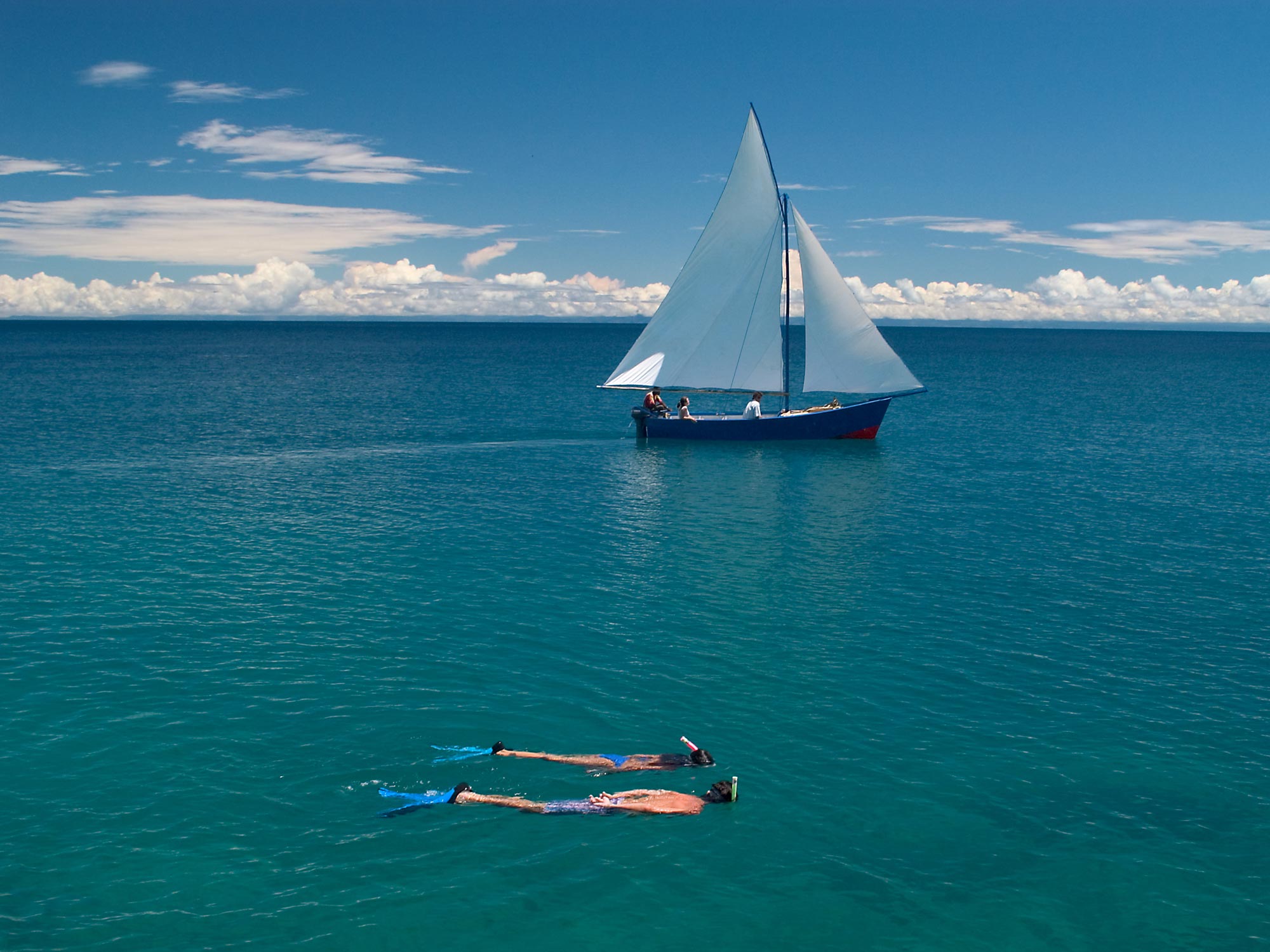Lake Malawi
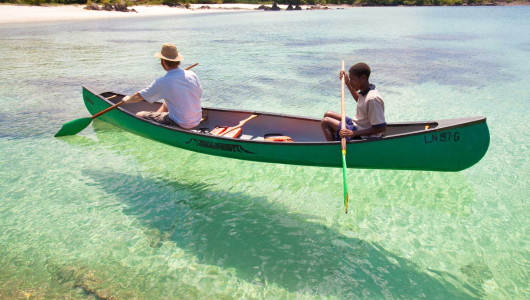
The jewel in the crown of the country’s tourist attractions is Lake Malawi, “discovered” by the missionary-explorer Dr David Livingstone just over 150 years ago. Although totally landlocked, Malawi is not denied its “inland sea”. This vast body of freshwater fringed by beaches of golden sand is not only a scenic wonderland but it provides water sport opportunities for those looking for something beyond sun, sand and swimming. Its approximate dimensions are 365 miles north to south and 52 miles broad, hence the sobriquet: "the calendar lake". The Lake, in the north, is quite extraordinarily deep: 2300 ft/700 m, plunging well below sea level. This reflects the enormity of the natural faulting of the Great Rift Valley, which is the origin of the Lake. The width of the lake’s shorelands vary from nothing to over 25 kilometres (16 miles), the edge of the Rift Valley rising steeply in places and more gently in others.
Because of its rich fish harvest, the Lake plays an important part in the economy. Fishing villages are scattered along the shore and the traditional industry and practices are an attraction to visitors. Access to the Lake is possible along much of its length but it should be noted that it is usually necessary to take a short detour off the main roads in order to reach the beach. Despite the attraction the Lake has to settlement, there are long stretches of totally uninhabited golden sand lakeshore, lapped by crystal clear waters. Kayaking, sailing, snorkelling, scuba diving and water skiing are just some of the lake activities available to visitors. Journeys by lake range from the famous motor vessel the Ilala to sailing in an ocean-going yacht. Cruises into the upper reaches of the great Shire river are also possible.
















 Back
Back 

